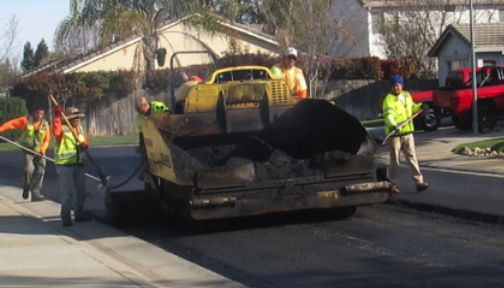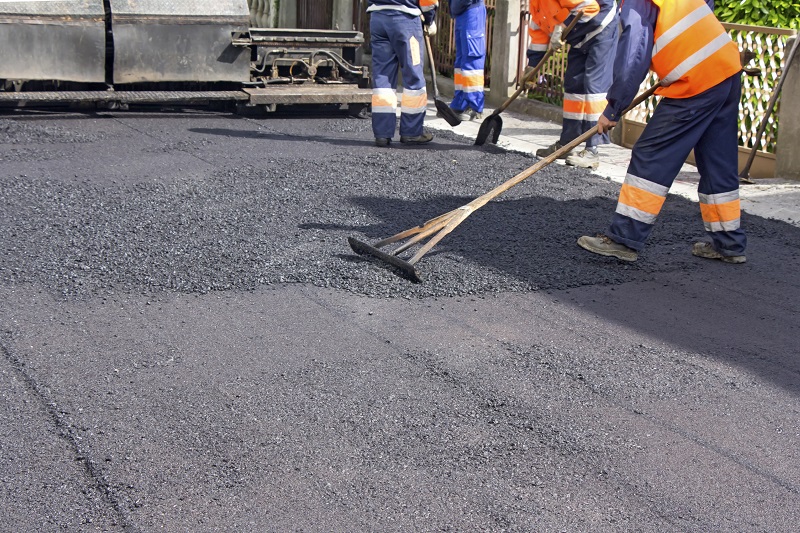Unlocking the Tricks of Warm Mix Asphalt Innovation
Discovering the midsts of warm mix asphalt innovation reveals a globe where careful procedures and exact solutions converge to shape our roads and infrastructure. The fusion of binders, fillers, and accumulations isn't just a building job yet a critical orchestration of resilience and efficiency. As we peer right into the detailed dancing of elements, a tapestry of durability and sustainability unfolds. But what exists under this surface area of asphaltic mastery, and what secrets wait to be introduced in the world of paving developments?
Importance of Warm Mix Asphalt
Warm Mix Asphalt plays an essential function in modern-day infrastructure development due to its longevity and cost-effectiveness. As the most commonly used paving material for roadways, freeways, and car park lots, Hot Mix Asphalt offers a range of benefits that contribute to its importance in building and construction projects.
The resilience of Warm Mix Asphalt stems from its make-up, which consists of aggregates, binder, and filler products that are meticulously chosen and mixed to satisfy particular efficiency demands. In general, the relevance of Hot Mix Asphalt in framework advancement can not be understated, as it proceeds to be a cornerstone of modern-day construction techniques.
Parts of Asphalt Mixes
The composition of asphalt blends consists of carefully picked aggregates, binder, and filler products that are important for achieving particular efficiency demands. Accumulations are the main element of asphalt blends, supplying strength and security. These accumulations can be natural, such as gravel or smashed stone, or synthetic, like recycled products from old pavements. The binder, typically bitumen or asphalt concrete, holds the accumulations together and supplies adaptability and toughness to the mix. The option of the binder is essential as it straight influences the mix's performance in various weather. Fillers, such as hydrated lime or Rose city concrete, are used to improve the mix's workability and aging resistance. Angled Parking.
The mix and percentage of these parts play a significant role in determining the quality and performance of the asphalt mix. Engineers very carefully develop the mix to fulfill specific requirements, considering factors like traffic quantity, environment problems, and sidewalk life-span. Proper selection and harmonizing of accumulations, binder, and fillers are essential for producing sturdy, lasting asphalt sidewalks.
Combining and Manufacturing Strategies

Once the aggregates are selected, the binder, often asphalt cement, is contributed to bind the materials together. The binder's quality and quantity considerably impact the mix's stamina, resistance, and adaptability to ecological aspects. Furthermore, fillers like hydrated lime or Rose city concrete may be included to boost details characteristics of the asphalt mix, such as its why not try these out workability or dampness resistance.
Throughout production, the aggregates and binder are heated, generally between 250-325 ° F(121-163 ° C ), to assist in mixing and ensure correct layer of the accumulations. The mixing procedure has to be complete to accomplish a homogeneous mix that promotes the wanted efficiency qualities of the asphalt. Numerous methods, such as batch blending or drum mixing, are used to accomplish high-grade and constant asphalt mixes for building and construction jobs.
Factors Influencing Asphalt Performance
Factors influencing asphalt efficiency incorporate a range of variables that influence the sturdiness, longevity, and general high quality of asphalt sidewalks. One key aspect is the top quality of materials used in the asphalt mix.

Design considerations, such as pavement thickness and drain, are essential in ensuring the lasting performance of the asphalt sidewalk. By meticulously thinking about these contractors, designers and variables can maximize asphalt efficiency and improve the service life of pavements.
Lasting Practices in Asphalt Modern Technology

WMA allows for the manufacturing and placement of asphalt blends at lower temperatures contrasted to typical hot-mix asphalt, resulting in decreased power intake and greenhouse gas discharges. The usage of permeable asphalt mixes can assist mitigate stormwater overflow concerns by allowing water to infiltrate via the pavement and into the ground, advertising all-natural water filtering and reenergize procedures.
Conclusion
Finally, warm mix asphalt modern technology plays an why not try here important duty in modern-day infrastructure navigate to these guys growth due to its toughness and cost-effectiveness. By carefully balancing components, employing proper mixing techniques, and considering various factors, designers can create high-quality asphalt mixes that stand up to rush hour tons and extreme weather condition conditions. Embracing sustainable techniques, such as making use of recycled products and warm-mix modern technologies, even more enhances the ecological friendliness of asphalt technology.
Mixing and manufacturing strategies in hot mix asphalt technology entail the specific combination and processing of accumulations, binder, and fillers to produce a high-performance and resilient asphalt mix.Factors affecting asphalt performance incorporate an array of variables that influence the toughness, longevity, and total quality of asphalt sidewalks. Lasting practices in asphalt technology encompass numerous efforts intended at decreasing the environmental influence of asphalt manufacturing and paving procedures. By integrating recovered asphalt pavement (RAP) and recycled asphalt roof shingles (RAS) right into brand-new asphalt blends, the sector can significantly reduce the consumption of raw materials and energy, while additionally reducing landfill waste.
WMA enables for the manufacturing and positioning of asphalt mixes at lower temperatures compared to typical hot-mix asphalt, resulting in decreased energy intake and greenhouse gas emissions.
Comments on “Hot Mix Asphalt: The Foundation for Safe and Secure Angled Parking Lots”